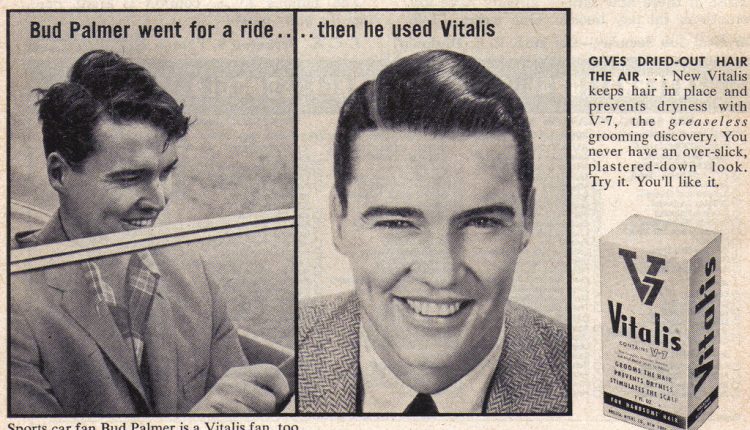 Pity the poor PPC ad copywriter. Back in the days of the so-called mad men, before Transparent Marketing was a necessity, they could just mix hyperbole, bold fonts, and a handsome fella, and then head out for the three-martini lunch. No one is measuring anyway, so who could prove the ad didn’t work?
Pity the poor PPC ad copywriter. Back in the days of the so-called mad men, before Transparent Marketing was a necessity, they could just mix hyperbole, bold fonts, and a handsome fella, and then head out for the three-martini lunch. No one is measuring anyway, so who could prove the ad didn’t work?
Fast forward to the present day. In a PPC (pay-per-click) ad, all you have are a few precious characters and tiny visuals in which to convince a skeptical consumer that will only glance at your ad for a split second that your ad deserves a click. On top of that, with paid search, you’re competing for that click with all of your competitors’ ads, as well as organic traffic, with no visual help at all.
On Wednesday’s Web clinic – Optimizing PPC Ads: How to leverage the full potential of 130 characters by clarifying the value proposition – Dr. Flint McGlaughlin will review key PPC experiments illustrating the potential of a clear value proposition to help the humble PPC ad men and women of the world perfect their craft. He will also teach on the components of a properly stated value proposition and how they apply specifically to PPC ads.
But first, we wanted to hear from you. How do you create an ad that stands out from the rest of your competitors? How do you get the click? Here are a few of our favorite answers…
Focused testing with an eye on the prize
- Have a clear goal in mind – for me it is to maximize total conversions, not just CTR)
- Focus your testing on ad groups with significant click volume – use what you learn from these test to help create your ads for your lower volume ad tests
- Make sure you ad is answering the search query – align with the searcher’s intent, have the keyword in the headline, descriptions lines, or url, etc.
- Have a strong call to action
- Test your unique value propositions or benefits
- Don’t write an ad from a blank canvas – use the Google Ad Preview Tool to see what your competitors are doing
- Make sure you set your ads to rotate more evenly in your campaign settings
- Remember that with every test you are just as likely to lose as to win – there is a cost associated with testing and you want to lose fast
- With high-volume ad groups with several keywords/search queries it may pay to segment your test results by keyword/search query and ad copy to see if you have any special cases where one ad performs great or really bad with a particular keyword – you may need to split your ad group for the next round of testing or add lots of negative keywords…you can do the same type of analysis for any of the variables you could potentially control like: geography, time-of-day, etc.
- Make sure you double check your detestation URL and make sure it’s working properly as well as any Web analytics tracking you may need
– Chad Summerhill, Senior Marketing Analyst, Moving Solutions, Inc.
Match unique landing pages with PPC ads
As activity increases in the conversion optimization space, online marketers will begin to see that creating a 1:1 match between PPC ad and landing page is crucial for winning the most conversions. It ensures tighter message match and relevancy for the visitor.
While creating many landing pages is important, when creating so many landing pages, it can be easy for a blooper or two to slip in. Here are eight common landing page bloopers I’ve seen. This slideshare works as a nice checklist for marketers who want to double check their landing pages to ensure they don’t hit any conversion roadblocks.
– Kristina Allen, Online Marketing Manager, ion interactive
Add value and avoid being a total failure
Do you want to stand out from your competitors only because of your ad or because of your value added? Try to point out what the value add of your company/product/service/ is and then approach it.
It’s easier to ask the question: How do you create an ad that is a total failure?
Thinking of that, you list all of the features of ads you hate and list the opposite characteristics such as:
- Make people laugh
- Don’t exaggerate
- Don’t be too tedious in repeating yourself
- Create a various way of providing the same message on different ways
- Channel your audience and then define the best approach to it
- Be provocative, but more rely on honesty in what you’re showing
- Place yourself on the content-related partners’ websites
- Create a meme
– Lucy Setian, Author and Digital Consultant at Bertelsmann Foundation
Related Resources
This Just Tested: PPC vs. banner ads?
This Just Tested: How PPC specificity drove 21% more clicks and cut costs 66%
2011 Search Marketing Benchmark Report – PPC Edition
The MarketingExperiments Quarterly Research Journal, Q3 2010
Optimizing PPC Ads: How to leverage the full potential of 130 characters by clarifying the value proposition — This Wednesday (1/19/11)
Photo by jbcurio



Hi Daniel, thanks for the mention! Looking forward to the web clinic.
-Chad
Nice article. Just signed up for the web clinic that was mentioned here. Thanks!
–Greg
Good article. Intesting to see some historic advertising used to make a point.
Wisdom has two parts: (1) having much to say; and (2) not saying it.